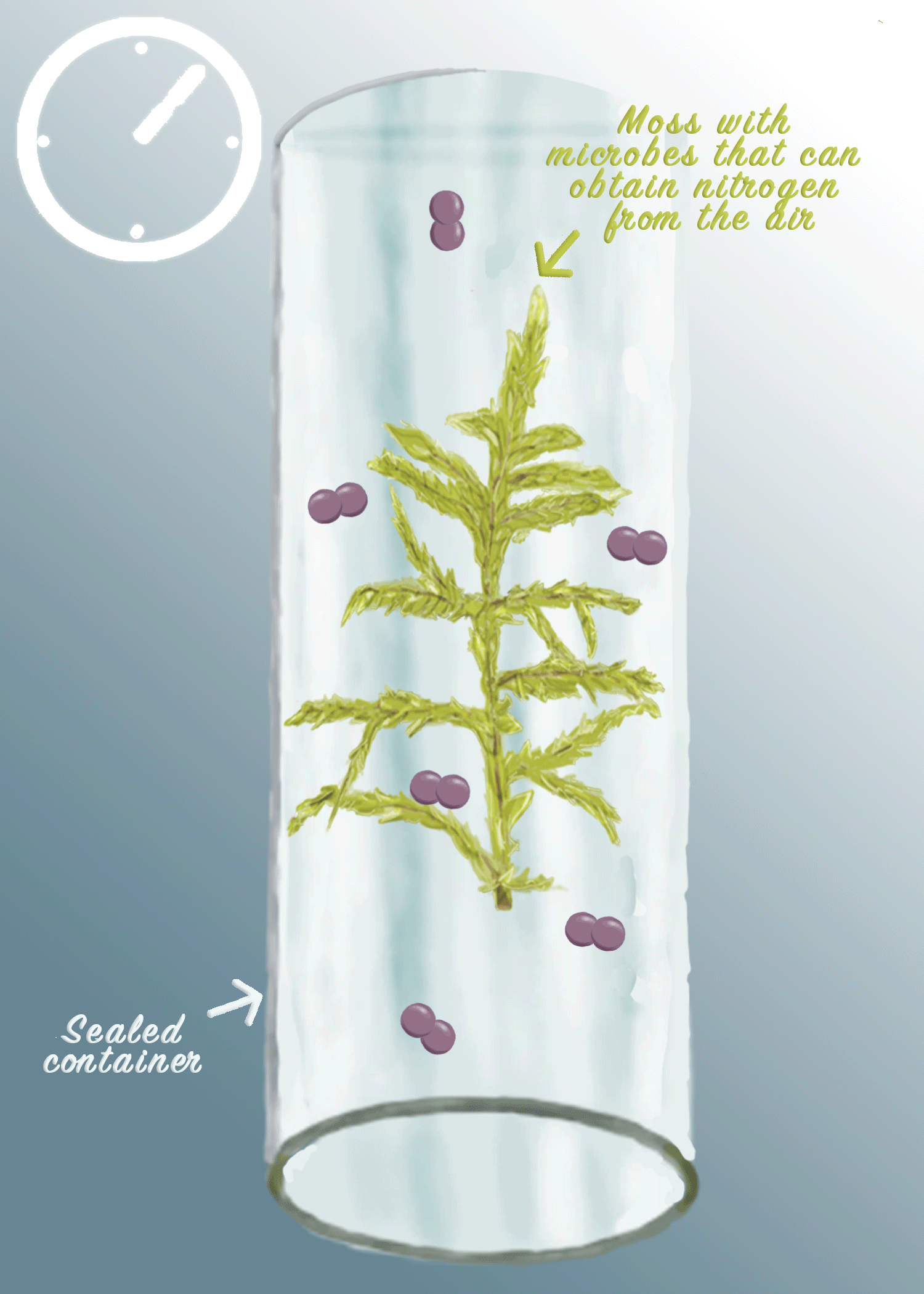Moss identity is a more important factor in how much nitrogen is fixed than many environmental variables, a new study by NAU graduate student researcher Julia Stuart has found. Nitrogen fixing, a process by which microbes convert atmospheric nitrogen into nutrients for plants, is an essential ecosystem service done by a host of microbes that reside on moss—and a particularly important one in the nitrogen-limited ecosystems of Alaska where Stuart focused her research. The study, “Host Identity as a Driver of Moss-Associated N2 Fixation Rates in Alaska,” published recently in the journal Ecosystems, offers an important insight for models that predict how landscape-level nutrient cycling will shift as the climate changes.
To get to the question of what factors best predict nitrogen fixation, Stuart and her team collected 34 species of moss from 24 field sites near Fairbanks, Toolik Lake and Anchorage, Alaska. They noted species and genus of the moss, as well as numerous environmental variables in each plot, including soil pH, tree density, temperature and average annual precipitation. Back at the Center for Ecosystem Science and Society (Ecoss) in Flagstaff, Stuart dried, ground and measured how much nitrogen was present in each sample using a mass spectrometer.

Based on this work, Stuart hopes next to ask what mechanisms might be behind these different nitrogen fixation rates.
“You could take a trait-based approach, and look at what features of species are associated with higher nitrogen fixers, such as anatomical structures, or how long it takes for a certain type of moss to dry out,” she said.
Stuart also is studying the fate of fixed nitrogen in these ecosystems, another important piece of the nutrient puzzle in the Arctic.
In addition to publishing as a graduate student and being named an ARCS Scholar, Stuart, who is entering her last year of doctoral studies, is a talented illustrator whose wry sense of humor often infuses her work. (Her Twitter bio reads: “I resent the phrase ‘bogged down.’”) At a recent Ecoss retreat, Stuart drew a legendary dead whale-shark ecosystem as a metaphor for research funding. She credits Ecoss’ Victor Leshyk and his Visualizing Science Discovery course with giving her the skills she needed to illustrate her own science (see gif).
As she approaches the culmination of her doctoral studies and next career step, Stuart has her gaze set on taliks. It’s a metaphorical gaze, since taliks are hidden beneath the landscape in the permafrost region. They are patches of ground that remain unfrozen year-round as everything surrounding them freezes. In December, Stuart won a lightning talk competition from the American Geophysical Union, securing an award that would allow her to embark on a pilot project to study taliks in Denali National Park, traveling by packraft to remote parts of the landscape on the Toklat River. Though the pandemic delayed that initial pilot trip, Stuart is looking forward to getting back to Alaska, potentially in a postdoctoral role, to investigate the environmental conditions where taliks occur.
“A Denali park scientist told me that the word talik comes from the Russian word meaning ‘little melted thing,’” Stuart said. “My Ph.D. has been all about how tiny things like mosses and microbes can have an outsized impact on their environment, and I’m excited to continue learning about another small but critical piece of the changing northern landscape.”
Kate Petersen | Center for Ecosystem Science and Society



